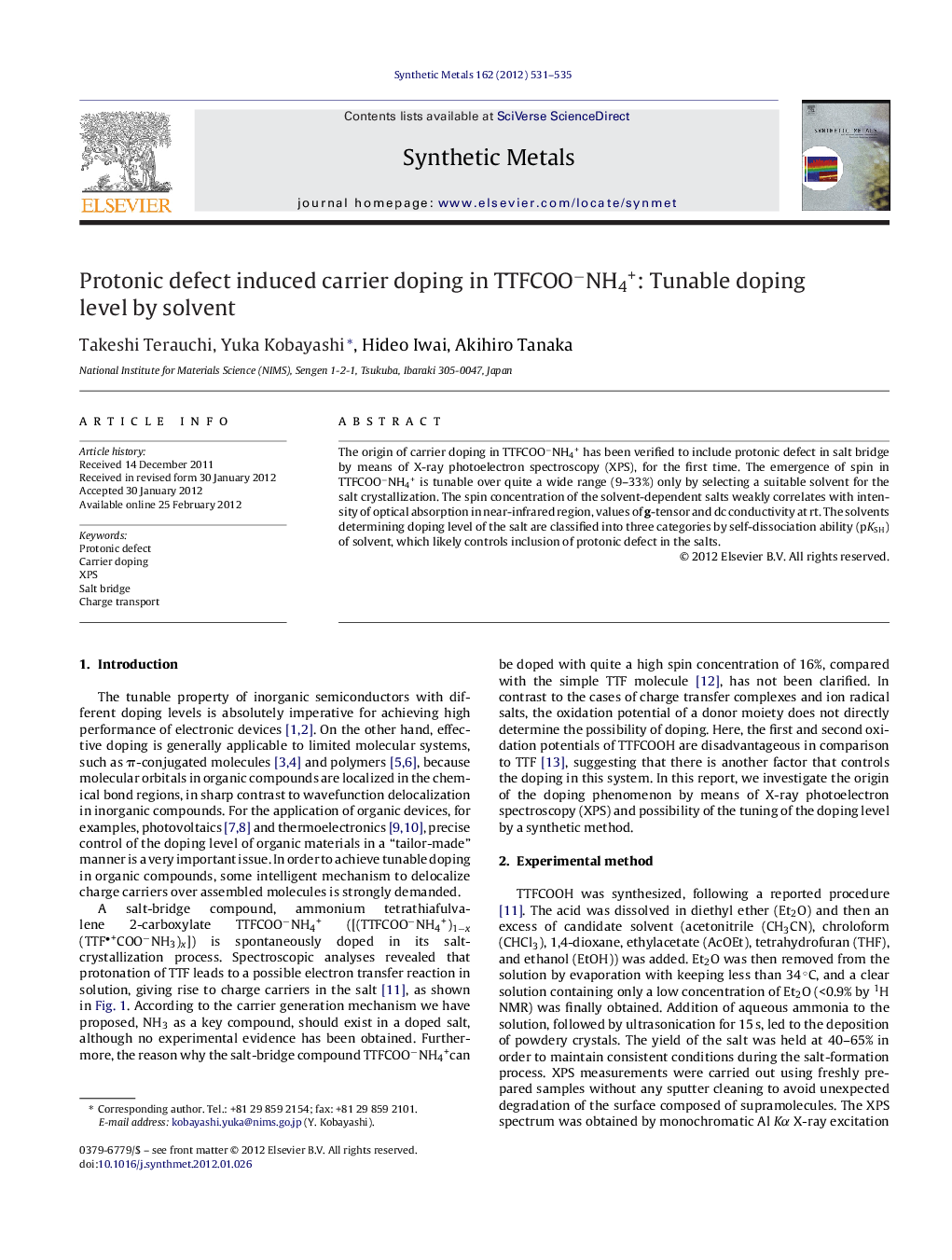| Article ID | Journal | Published Year | Pages | File Type |
|---|---|---|---|---|
| 1442107 | Synthetic Metals | 2012 | 5 Pages |
The origin of carrier doping in TTFCOO−NH4+ has been verified to include protonic defect in salt bridge by means of X-ray photoelectron spectroscopy (XPS), for the first time. The emergence of spin in TTFCOO−NH4+ is tunable over quite a wide range (9–33%) only by selecting a suitable solvent for the salt crystallization. The spin concentration of the solvent-dependent salts weakly correlates with intensity of optical absorption in near-infrared region, values of g-tensor and dc conductivity at rt. The solvents determining doping level of the salt are classified into three categories by self-dissociation ability (pKSH) of solvent, which likely controls inclusion of protonic defect in the salts.
► The origin of the carrier doping in TTFCOO−NH4+ has been revealed to include protonic defects in the salt bridge by XPS. ► Doping level of TTFCOO−NH4+ is tunable by selecting suitable solvent over the range, 9–33%. ► Criterion determining doping level of TTFCOO−NH4+ correlates with self-dissociation ability of solvent, controlling inclusion of protonic defect in the salt.
